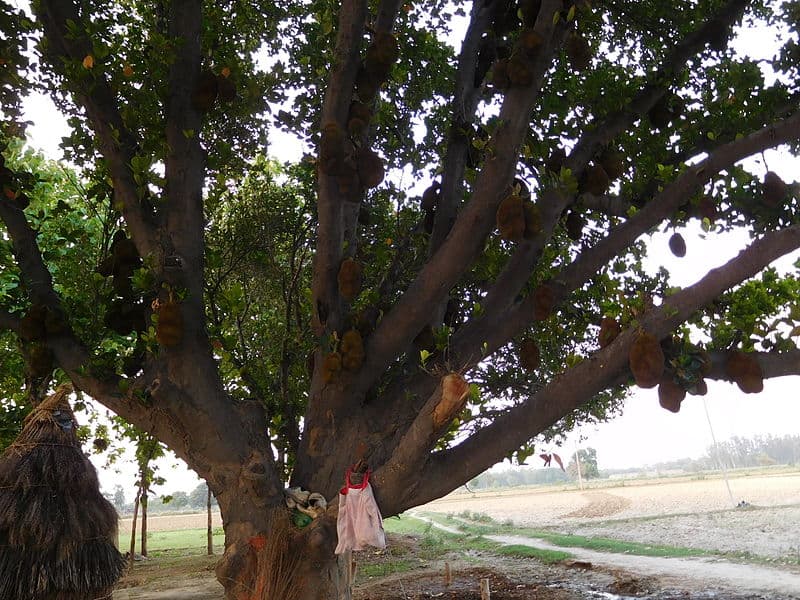
Jackfruit Tree Facts
- Firstly, the astonishing Jackfruit Tree constitutes the species of tree that produces the largest known tree-borne fruit on earth.
- Furthermore, although now extensively cultivated in parts of the world, it evolved as native to a highly restricted habit range.
- In addition to the many uses for its enormous fruit, the wood of this angiosperm remains highly valued for certain properties.
- Finally, this amazing plant has played a role of significant cultural importance within its endemic range for more than 3,000 years.
Related Articles
Jackfruit Tree Physical Description
While the Jackfruit Tree stands out from related species in some ways, in size it nonetheless ranks as a rather average-sized variety.
Mature specimens achieve a maximum height of about 65.6 ft (20 m),
and also develop a trunk diameter of as much as roughly 31.5 in (80 cm).
Typically developing a reddish-brown in color, and also a smooth consistency, the bark nevertheless hides another unique attribute.
If the bark suffers damage, it frequently releases a rather thick, milky juice-like substance is released at the point of damage.
Most notably, the truly enormous fruit of this species can actually weigh as much as 120 lb (55 kg).
- Kingdom: Plantae
- Phylum: Angiosperms
- Class: Eudicots
- Order: Rosales
- Family: Moraceae
- Genus: Artocarpus
- Species: A. heterophyllus
Jackfruit Tree Distribution, Habitat, and Ecology
Rather unfortunately for those who enjoy its enormous fruit, the Jackfruit Tree only grows naturally in southwest India, in Asia.
However, its extreme popularity in the region led to its being cultivated in many countries in the area, including Bangladesh and Sri Lanka.
Further, in the wild, it most commonly grows in lowland areas with a tropical and does best in those conditions in cultivation also.
Also, this amazing plant often produces as many as 200 of astounding, quite versatile, and reportedly delicious fruit each year.
Finally, the jackfruit itself serves as an excellent source of dietary fiber, numerous vitamins minerals, as well as protein and carbohydrates.
Species Sharing Its Range
Check out our other articles on Snowshoe Hare, Purple Frog, Haukadalur Geothermal Area, Fringed Gentian, Lord Howe Island Stick Insect, California red-sided garter snake
